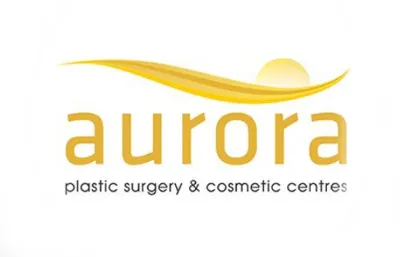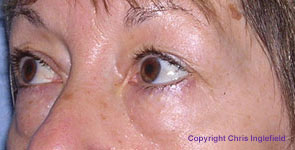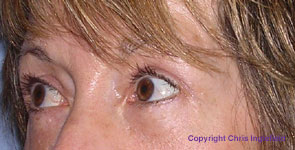Upper and lower eyelid surgery or blepharoplasties are the 5th most common surgical procedure in the U.S. with 113,229 procedures performed in 2019. This represents a decrease of 2.0% on 2018 figures, and a decrease of 8.8% on the number of operations originally recorded for the procedure in 2015, when it was the 4th most popular surgical procedure, according to statistics from the American Society for Aesthetic Plastic Surgery (ASAPS).
As we age, our skin can become thinner and less stretchy. Our muscles can weaken and fat that cushions the eyeball moves forward through spaces in the muscle around the eyes, causing "bags". Sagging upper eyelids may result in a “hooded” appearance over the eyes. In severe cases of eyelid hooding, vision can be affected.
It is often our eyelids which show the signs of ageing first which is why this can be the first cosmetic treatment which a man or a woman might choose. Eyelid surgery can help restore a more youthful appearance by tightening droopy or hooded eyelids, restoring the smooth line of the eyelids, and removing or moving fatty pouches beneath the eyes.
Some people suffer from eyebags, caused by pseudohernias of fat (which is fat pushing through the wall of the eye muscle) at a young age. This tends to be hereditary (an inherited condition from within the family) and can be corrected with a lower eyelid blepharoplasty.
Blepharoplasty, however, cannot remove dark circles under the eyes caused by dark pigmentation of the skin or by very thin, translucent (“see-through”) skin. It does not smooth fine lines and wrinkles around the eye or "crows' feet". It cannot lift sagging eyebrows either.
Low eyebrows can only be raised in a brow lift operation.
Blepharoplasties are sometimes performed alongside a brow (forehead) lift or face lift. It can also be combined with laser skin resurfacing or a chemical peel to smooth wrinkles, or with botulinum toxin injections to produce a better final overall result.
If you are considering eyelid surgery, the following information will give you a basic understanding of the procedure. It can't answer all your questions, since a lot depends on the individual patient and the surgeon.
Please ask a surgeon about anything you don't understand.





